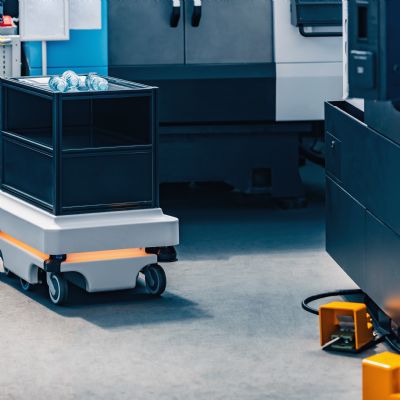Safety Standard Updates: ANSI B11.0 and ANSI B11.19
May 1, 2011Comments
The American National Standards Institute (ANSI) and B11 Standards, Inc. publish 24 safety standards for metalworking (cutting and forming) machinery, known as the B11 series. Two important standards in this series that have just been revised: ANSI B11.0, Safety of Machinery; General Requirements and Risk Assessment; and ANSI B11.19 Performance Criteria for Safeguarding.
In the absence of machine-specific standards, these two standards combine to form the foundation not only for B11 machine-specific (Type-C) standards, but also for other industrial machinery lacking a machine-specific safety standard.
The B11 standards and technical reports can be associated with the ISO A-B-C level structure:
• Type-A standards (basis standards) provide basic concepts, principles for design, and general aspects that can be applied to machinery.
• Type-B standards (generic safety standards) address one or more safety aspects or one or more types of safeguards that can be used across a range of machinery.
• Type-C standards (machinery safety standards) address detailed safety requirements for a particular machine or group of machines.
ANSI B11.0 is considered an A-level standard; it applies to an array of machines and contains very general requirements. The scope of the standard states that “the standard applies to new, modified or rebuilt power driven machines, not portable by hand, used to shape and/or form metal or other materials by cutting, impact, pressure, electrical or other processing techniques, or a combination of these processes.”
More specifically, the revised standard states that machinery suppliers and users are responsible for defining and achieving acceptable risk. The standard provides additional details and descriptions of the responsibilities of users and suppliers. The primary performance requirement of the standard: Any risks associated with the operation, maintenance, dismantling and disposal of machinery shall be reduced to an acceptable level. The standard includes a formal method to conduct and document the risk-assessment process, and also identifies some preparations that must be made before a risk assessment begins. The standard presents the basic risk-assessment process in a step-by-step approach to assist in achieving this goal.
ANSI B11.19, considered a B-level standard, addresses general safety elements that can be used across a range of machinery. The scope of this standard states that it provides “performance requirements for the design, construction, installation, operation and maintenance of the safeguarding; e.g., guards, safeguarding devices, awareness devices and safeguarding methods.” This standard also provides performance requirements for complementary equipment and measures, safe work procedures and safety functions.
New requirements and information in ANSI B11.19 address protective (safety) stops, perimeter guarding, muting, bypass, emergency stops including rope/cable pulls, three-position enabling devices, hold-to-run control, guard interlocking switches with guard locking, and presence-sensing device initiation (PSDI). There also is greater emphasis on risk assessment, to allow safety solutions other than those meeting requirements contained in the previous control-reliability clause (6.1). The intent is to maintain a high level of safety performance for safety-related functions, but also allow safety solutions that can be reasonably justified through the process of a documented risk assessment that meets the required risk reduction.
Order the standards online at webstore.ansi.org.
Submitted by Mike Carlson, safety products manager, Banner Engineering, Minneapolis, MN: 763/544-3164; www.bannerengineering.com
See also: Banner Engineering Corp.
Technologies: Safety
Comments
Must be logged in to post a comment. Sign in or Create an Account
There are no comments posted. Safety
SafetyIs Your Plant Ready for Summer? OSHA Program Seeks to Protec...
Thursday, January 19, 2023
 Safety
SafetyWebinar Addresses New OSHA Recordkeeping Requirements and El...
Thursday, December 1, 2022






